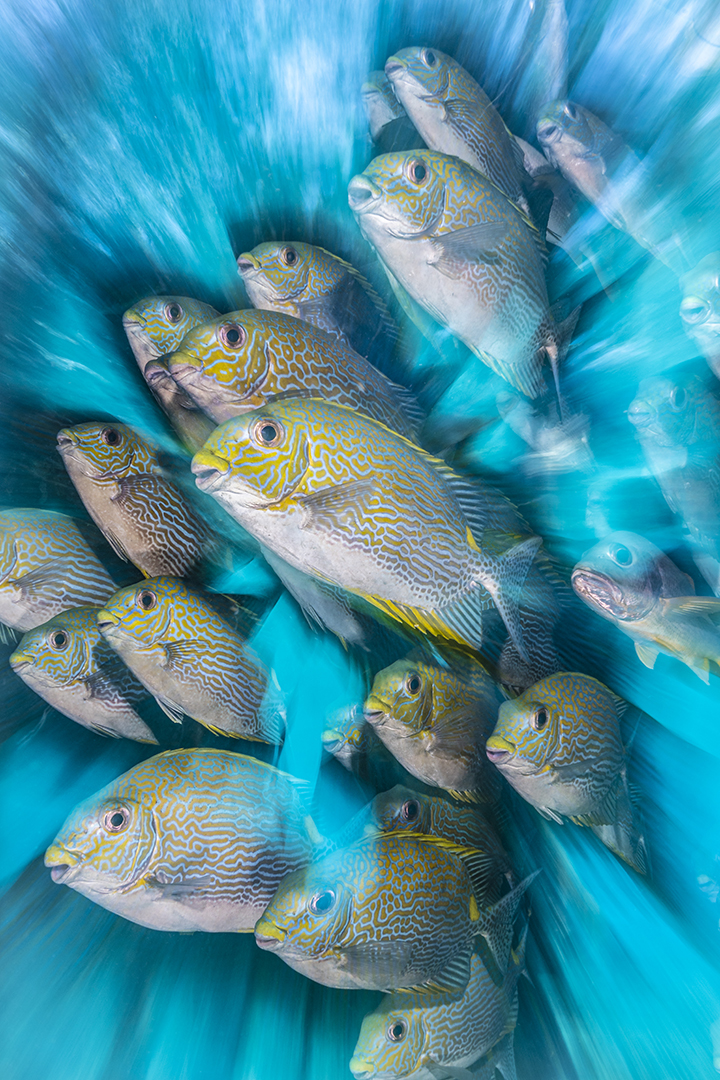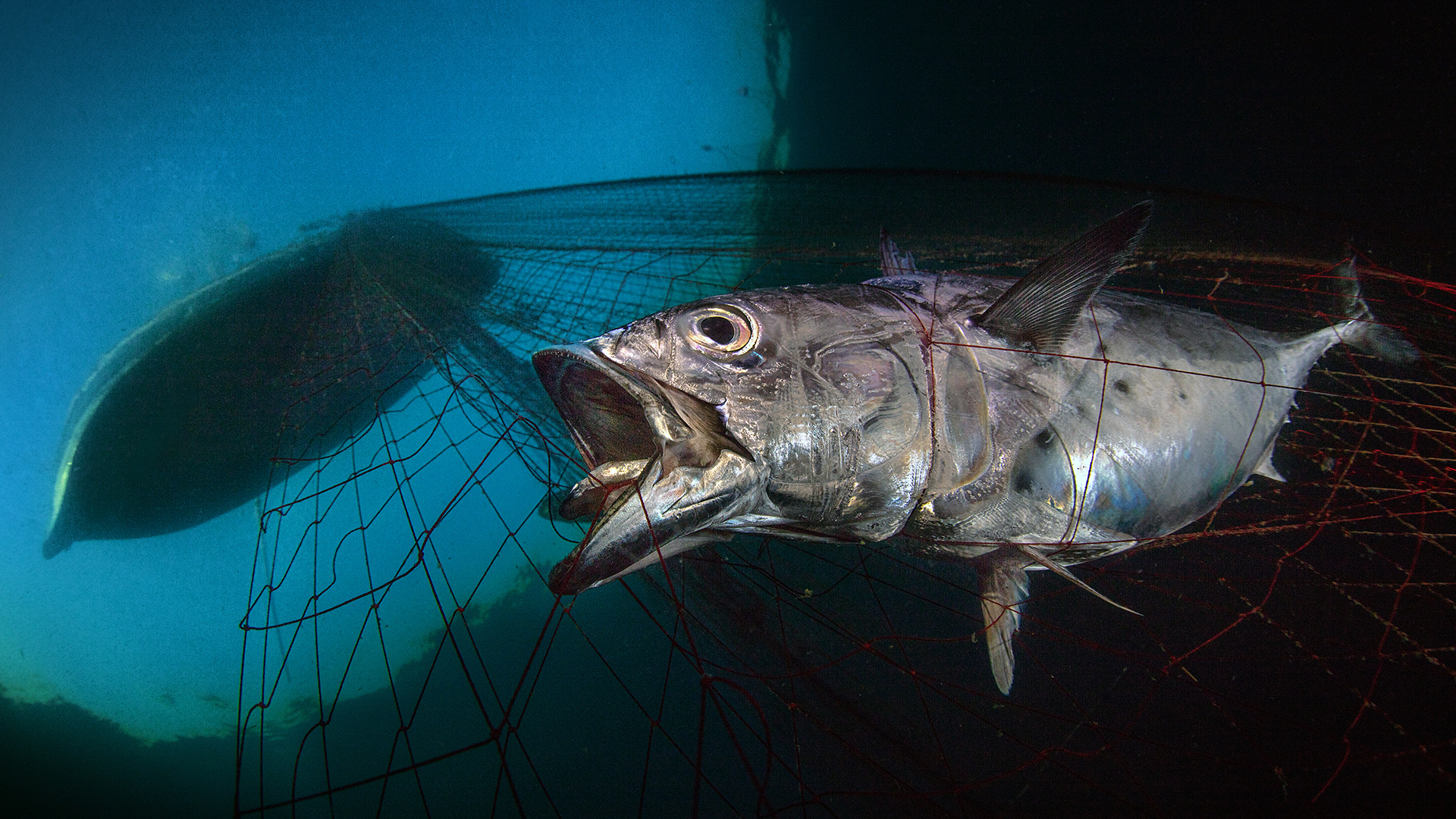Eerie seal 'ballet' beneath Antarctic iceberg wins underwater photo prize
A photographer captured the blue-tinged scene in ocean waters near Antarctica.

An iceberg towering above the sea surface is an impressive sight, but the view from below is positively otherworldly.
A breathtaking photo captured by French photographer Greg Lecoeur in chilly ocean waters near Antarctica revealed a mesmerizing scene: a drifting quartet of crabeater seals (Lobodon carcinophagus) illuminated by blue-tinged light under the bottom of a shadow-dappled iceberg.
Judges named Lecoeur the Underwater Photographer of the Year (UPY) 2020 for his mesmerizing wide-angle image, titled "Frozen Mobile Home." Lecoeur's photo stood out among more than 5,500 submissions representing photographers from over 70 countries, contest representatives announced on the UPY website.
Related: Photos: Stunning shots of the natural world
As a full-time photographer, Lecoeur travels to remote destinations around the world to document marine animals, and in Antarctica he was drawn to the wildlife that collect around "massive and mysterious" iceberg habitats, he said in a statement.
"Little is known about how wildlife thrives around these mobile homes," Lecoeur said. "Icebergs fertilize the oceans by carrying nutrients from land that spark blooms of marine life and also provide homes for larger animals, like these crabeater seals."
The seals dine on krill — shrimplike crustaceans that are abundant in waters around Antarctica — and krill are nourished by the nutrients that flow into the ocean from melting icebergs and glaciers, according to the Woods Hole Oceanographic Institution's Oceanus Magazine.
Sign up for the Live Science daily newsletter now
Get the world’s most fascinating discoveries delivered straight to your inbox.
Lecoeur captured the photo during an expedition to the Antarctic Peninsula, where the team explored "the hidden face of this iceberg," according to the statement.

Another prizewinning image strikingly framed a school of rabbitfish — colorful Indonesian reef dwellers — against a backdrop of a vivid turquoise sea transformed into an abstract light show through motion blur. This method combines a fast zoom with a slow shutter speed to create "a Pop-Art like effect," said British photographer Nicholas More, named by UPY judges as British Underwater Photographer of the Year 2020.
"I like how the technique adds dynamism to pictures," More said in a statement.
Other standout images featured eerie shipwrecks transformed into artificial coral reef habitats; extreme close-ups of bug-eyed unicorn shrimp; a tiny see-through octopus; the birth of a Mediterranean cat shark; and a great white shark gnawing on a decayed sperm whale corpse.

Some of the UPY contest participants focused their cameras on not only the natural beauty of life underwater, but the plight of marine animals threatened by human activity. The title of Marine Conservation Photographer of the Year 2020 went to Italian photographer Pasquale Vassallo for a dramatic and poignant photo titled "Last Dawn, Last Gasp," showing a tuna species known as the little tunny (Euthynnus alletteratus), its mouth gaping wide as it struggles in a fisherman's net.
Vassallo snapped the image in the Mediterranean Sea off the western coast of Italy, during an early morning dive with several local fisherman, he said in a statement.
You can see all of this year's contest winners in the image gallery on the UPY website.
- Photos: Hilarious animal antics
- Photos of colorful, majestic marine creatures are 'a visual feast'
- The best photos of Sony's 2019 wildlife photography competition
Originally published on Live Science.
OFFER: Save at least 53% with our latest magazine deal!
With impressive cutaway illustrations that show how things function, and mindblowing photography of the world’s most inspiring spectacles, How It Works represents the pinnacle of engaging, factual fun for a mainstream audience keen to keep up with the latest tech and the most impressive phenomena on the planet and beyond. Written and presented in a style that makes even the most complex subjects interesting and easy to understand, How It Works is enjoyed by readers of all ages.

Mindy Weisberger is an editor at Scholastic and a former Live Science channel editor and senior writer. She has reported on general science, covering climate change, paleontology, biology and space. Mindy studied film at Columbia University; prior to Live Science she produced, wrote and directed media for the American Museum of Natural History in New York City. Her videos about dinosaurs, astrophysics, biodiversity and evolution appear in museums and science centers worldwide, earning awards such as the CINE Golden Eagle and the Communicator Award of Excellence. Her writing has also appeared in Scientific American, The Washington Post and How It Works Magazine. Her book "Rise of the Zombie Bugs: The Surprising Science of Parasitic Mind Control" will be published in spring 2025 by Johns Hopkins University Press.
NASA rover discovers out-of-place 'Skull' on Mars, and scientists are baffled
A long-lost Antarctic ice sheet could predict the future of New York City — one in which Lower Manhattan and Coney Island are 'perpetually submerged'
Watch boozing chimps share alcoholic fruit. Is this how social drinking started?










